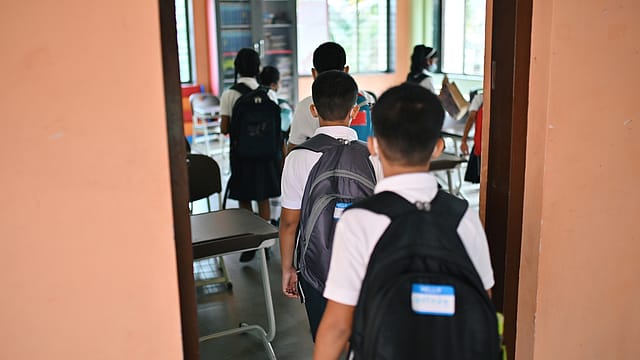Education can boost economic expansion in India: Moody's
ADVERTISEMENT

Better education and higher workforce participation can support inclusive growth and boost the contribution of labour to economic expansion, according to Moody's Investors Service.
There remains a considerable gap in the quality of education between Pakistan, Bangladesh and India compared with China and other peers in Southeast Asia, which contributes to labour-force participation imbalances, the credit rating agency says in a report.
The quality of human capital, which is correlated with the presence of quality education, will be important in facilitating shifts from agriculture and resource-based activities, as well as informal and unskilled services, to higher-value-added manufacturing and services, it says.
Moody's expects continued population growth in South and Southeast Asia to support economic expansion as working-age populations will remain large compared with younger and older citizens. However, the availability and scale of labour inputs alone will not drive materially stronger economic strength or better fiscal outcomes, it cautions, adding that other conditions such as strong education and quality infrastructure are also key to reaping the benefits.
According to Moody's, the policy emphasis on infrastructure development has been most evident in recent years in India and the Philippines. India, Indonesia and the Philippines have also made significant gains in regulatory quality and government effectiveness, augmented by a trend improvement in financial and external stability, bolstering the investment climate, the report says.
December 2025
The annual Fortune 500 India list, the definitive compendium of corporate performance, is out. This year, the cumulative revenue of the Fortune 500 India companies has breached $2 trillion for the first time. Plus, find out which are the Best B-schools in India.
By contrast, a lack of fiscal capacity has constrained resources allocated to capital expenditure in Bangladesh and Pakistan, where infrastructure quality is significantly worse than for other large Asian economies, Moody's says, adding that weak infrastructure and governance act as additional constraints for Bangladesh and Pakistan.
Six large developing Asian countries – Bangladesh, India, Indonesia, Pakistan, the Philippines and Vietnam – will account for about one-third of the global population increase over the next 20 years, as well as 40% of the rise in the working-age population.
According to the United Nations, India's population reached 1.4 billion people in April 2023, surpassing China as the world's most populous nation. The UN estimates China's population peaked in 2022 at around India's current level, it expects that India will do so only in 2063.
China leads the expected length of schooling at more than 14 years in 2021, followed by Indonesia, the Philippines and Vietnam, at or above 13 years, according to Moody's. Educational attainment in Indonesia is aided by prevailing fiscal rules that require 20% of the central government's budget to be allocated toward education. "This variation in the total mean years of schooling likely reflects gender disparities in educational achievement: the difference in the proportion of the male and female population that has completed an upper secondary education is most pronounced in India and Bangladesh; by contrast, a greater percentage of females than males has completed secondary school in the Philippines," says Moody's.
Enhanced educational outcomes will also mitigate potential job losses from automation, digitalisation and artificial intelligence over the long run, especially for certain segments of the services industry, such as call centers and other business process outsourcing activities in India and the Philippines, according to Moody's. "The development of relevant engineering and programming expertise may actually provide employment opportunities, not only in technology-related fields, but also in higher-value-added manufacturing given the increasingly complex products being produced in some of these large countries, for example, smartphones in India and electric vehicles in Vietnam," the rating agency says.
